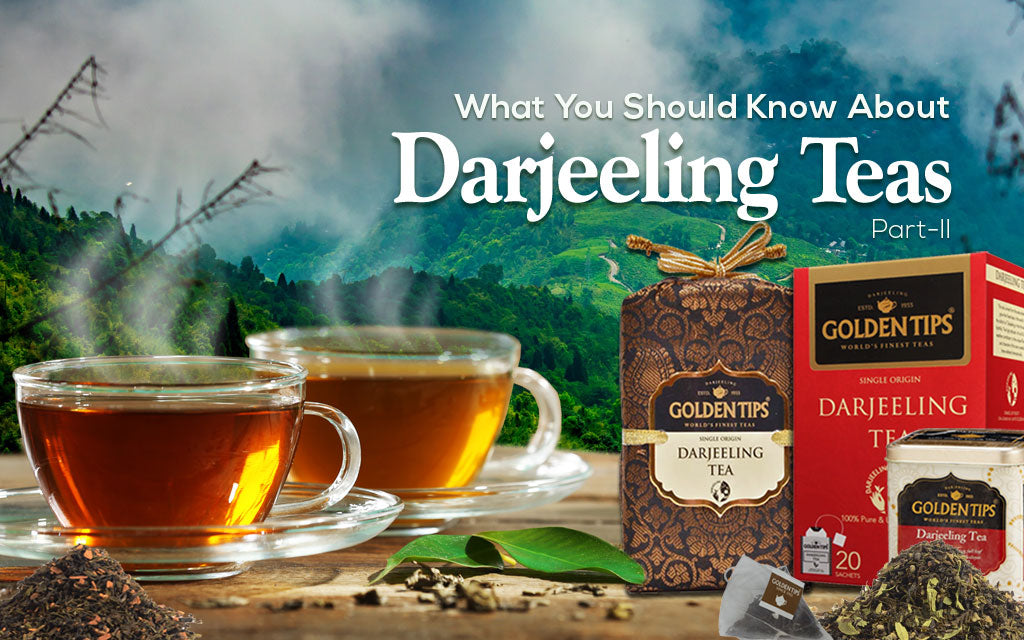
Part 2: All About Darjeeling Teas
What are the Different Types of Darjeeling Teas?
Darjeeling White Tea
The Darjeeling white tea grows in certain areas, elevated over 2000 meters, and having cold temperatures throughout the year. Carefully selected fresh leaves are rolled and withered in direct sunlight. White tea has a delicate aroma and yields pale golden liquid that has a tinge of natural sweetness to it.
Darjeeling Oolong Tea
Only those estates that lie above 3000 meters and have a temperature between 5 and 20 degrees Celsius can make Oolong teas. The semi-oxidized leaves give the liquid its light orange appearance. The farmers will pluck delicate leaves and expose them to the sun and air. They will then pan-fry and hand-roll them.
Darjeeling Green Tea
Farmers wither and dry the leaves to evaporate the water. They then oxidize the leaves to stop oxidation to preserve the polyphenol content. Darjeeling Green tea has 60% more polyphenol content than other types of black teas. Darjeeling green tea has a flowery aroma, nutty muscatel flavor, and its brew has a yellowish-green hue.
Which Darjeeling Flush Is More Popular and Why?
The first flush teas are more popular due to their lively character and bright color. Some individuals are more predisposed to the first flush than other blends of Darjeeling tea. Also, first flush teas are low in supply, and demand almost always exceeds stock. Most tea connoisseurs prefer both first and second flush teas.
Where Does Darjeeling Second Flush Tea Get Its Taste From?
Darjeeling second flush has a popular taste profile because of its distinct muscatel flavor that no other tea in the world can match. A unique combination of typographical characteristics unique to Darjeeling, weather conditions, plant types, and even insects result in the muscatel flavor of the tea.
All these factors must come together to give Darjeeling second flush its unique flavor and enriched aroma.
How Much Caffeine Does Darjeeling Contain?
Although the exact amount of caffeine largely depends on the flush, the average amount is 50mg per 8 fl oz cup.
How to Brew Darjeeling Black Tea
Preparing this elixir requires more care than other teas because impurities can easily damage Darjeeling's subtle taste and aroma. It is not advisable to use a bar of soap to clean a cup or pot meant to hold Darjeeling tea. Instead, thoroughly wipe the vessel with a damp cloth to clear out any residue.
Never make Darjeeling tea with distilled water since it will dull the quality of the liquid. Use a thermometer and heat water to about 96 degrees Celsius. You can also do this without a thermometer, in which case simply boil the kettle of water and let it sit for a few moments.
Now toss in two teaspoons of Darjeeling tea leaves for a single cup. Pour the hot water over the tea and for two to three minutes.
Click here to check out the complete range of Darjeeling teas and other types of finest teas at Golden Tips Tea.





























